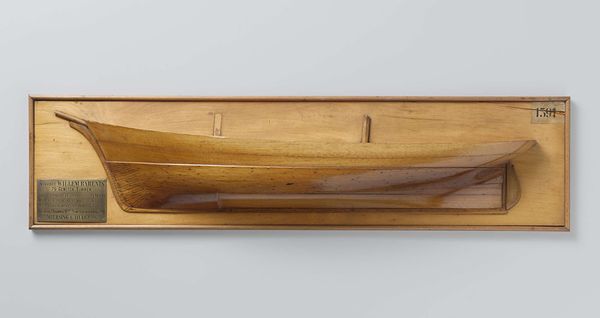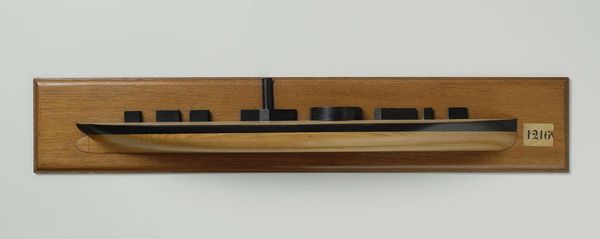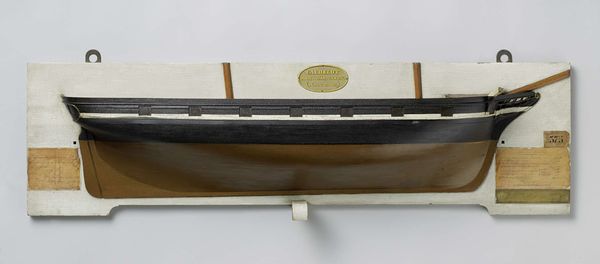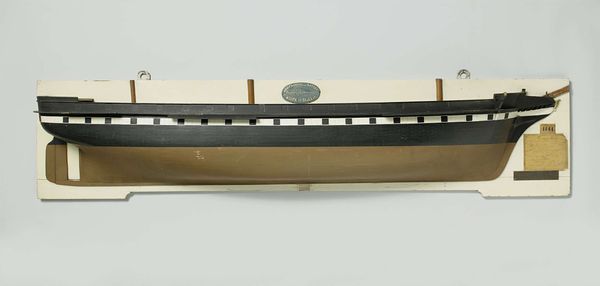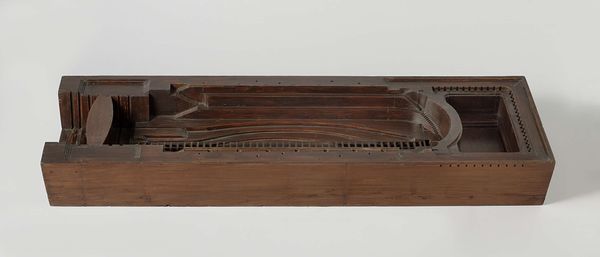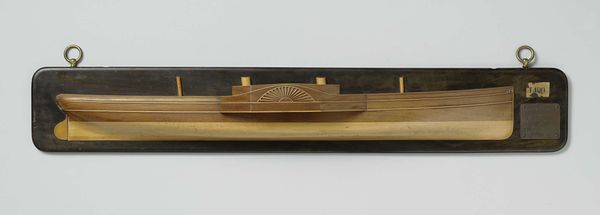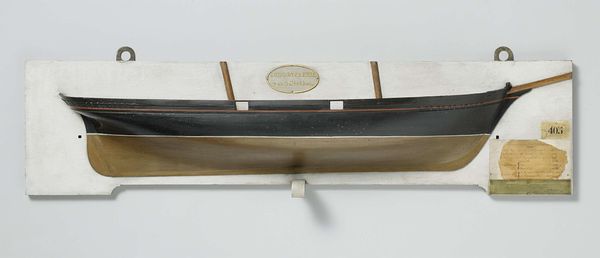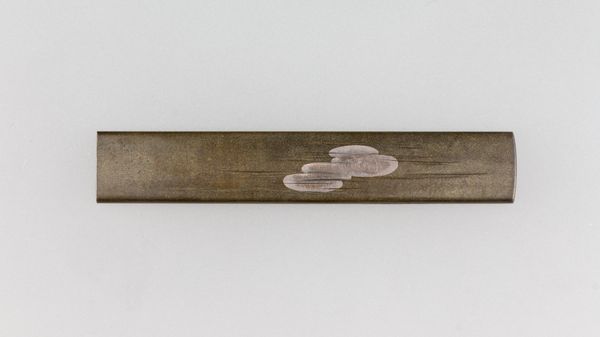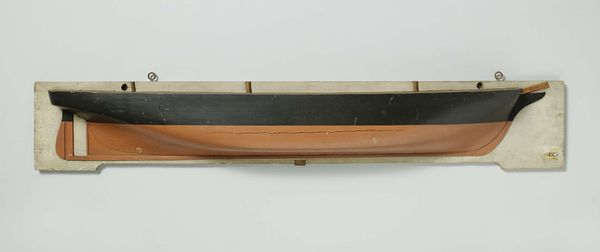
sculpture, wood
#
still-life-photography
#
sculpture
#
wood
Dimensions: height 15.8 cm, width 79 cm, depth 8 cm
Copyright: Rijks Museum: Open Domain
Curator: We’re looking at a wooden half model of an ironclad ram ship, crafted around 1865-1866 by R. Napier & Sons. Editor: It's surprisingly elegant in its simplicity. The clean lines and limited color palette give it an almost minimalist feel. Curator: Indeed. Half models like this one were essential tools in 19th-century shipbuilding. They weren't just decorative; they allowed builders to visualize and refine a ship's design before committing to the full build. Napier & Sons, of course, were significant players in naval shipbuilding, contributing significantly to maritime technology and defense. Editor: So, it’s a functional object elevated by its form. I’m drawn to the way the light plays across the polished wood, highlighting the curve of the hull. The contrast between the natural wood grain and the dark, painted upper section creates a compelling visual tension. Curator: The choice of wood itself is interesting, a robust material suited for withstanding the rigors of maritime life. Ironclads, revolutionary for their time, altered naval warfare, leading to major shifts in strategy and global power dynamics. Owning these ship models also indicated a level of economic prestige and technological advancement. Editor: It also makes me think about the missing half – the absent dimension of the ship, the potentiality that exists beyond this presentation. The restraint almost amplifies its presence, creating a powerful and evocative sculpture despite its size. Curator: Precisely. It encapsulates both aesthetic consideration and societal narratives around technological advancement during that era. I see it reflecting a pivotal moment where Britain commanded not just trade routes but innovative military production too. Editor: So, ultimately a blend of the pragmatic and the symbolic. I leave seeing a reflection of how utility and vision are inherently interwoven. Curator: Agreed, it’s more than just a static artifact. It's a three-dimensional testament to an epoch of monumental shifts in naval history.
Comments
No comments
Be the first to comment and join the conversation on the ultimate creative platform.

